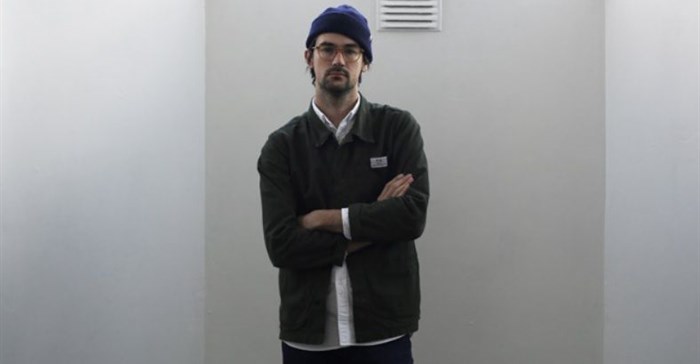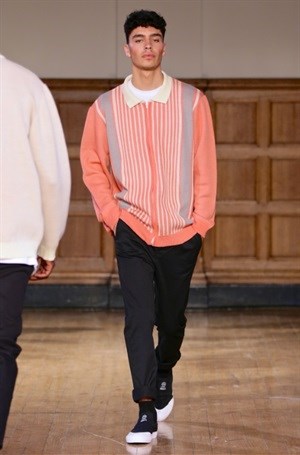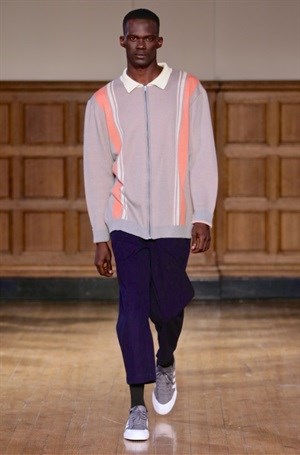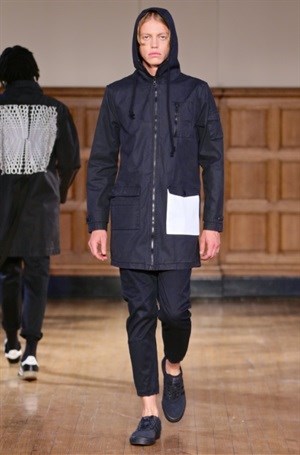
Founder and designer, Durban-born Mathew Kieser, manages to strike a delicate balance between streetwear and classic menswear with well-constructed wardrobe staples in structured silhouettes and muted tonal colours. Merge this with pops of bold prints and subtle but innovative detailing and you've got a fresh-to-death wardrobe largely capable of transitioning the contemporary city-dweller from work to play.
Following Sol-Sol's recent showing at South African Menswear Week, Kieser shares his views on design, fashion shows, and the challenges facing emerging designers in South Africa today.
I had always wanted to do it and tried it with a small t-shirt label when I was around 20, but just being completely naive in a bunch of different business and design areas it failed pretty early on. I then carried on working within the retail, production and design sector and got to a stage where I figured I had the know-how and contacts to actually make it work and last.


It's usually quite minimal but I am slowly breaking out of my comfort zone – which I think is natural – and using a brighter array of colours and prints and different silhouettes and fabrics. But saying that, we have still stuck to our classic style of toned-down streetwear.
There weren't any serious deviations although it was quite different, variations on a theme. We used the two basic silhouettes we run with in every collection but added to them and took away from them to create completely new pieces. We're trying new things like having our big logo and branding on the back that's actually removable – for the guy who doesn't want a loud piece.
We also introduced some beautiful knitwear – a mohair and merino blend all made in Cape Town. We haven't done knitwear before, but it followed on from a more summer 'Sopranos' inspired collection from last year.


They do hold value because it's probably the earliest and cheapest way to realise your collection needs to be delivered on time and if you don't deliver there will be consequences. It also pits you alongside designers who have been doing it for years, and you can hold your product up to theirs and be honest about how far you need to go.
There are also some buyers around who might pick up your collection. But other than that it's a great show and the media generated out of it for designers is great!
I think it's like anything; it was a subculture born out of cool kids, skaters, artists, musicians and slowly made its way to the mainstream. It was cheap tees, caps and hoodies that our parents could afford. I think the emergence of a new breed of celebrity the including the likes of Kanye and ASAP Rocky had a large part to play. Kim Jones of Vuitton called it ages ago and was probably the first to start infiltrating high fashion with streetwear.
Aesthetically I'm really not sure, it's not something high on my agenda. I know what clothes I like to wear and make, I'm not out here trying to design the next piano key necktie – shout out Mugatu! But I guess the biggest part would be reducing a carbon footprint, more ethical labour, etc.


Geography. For me, that's the biggest issue. A store in Milan is going to choose a brand based out of Paris or Stockholm and a store from Hong Kong is going to choose a brand from Singapore or Kyoto because it's just so much easier. Also, I don't think South Africa, in the fashion sense, is really seen as a design powerhouse on a mass scale yet.
Of course, there are really talented designers here and there are stores from around the world who are looking here for the next big thing, just not enough right now. It's coming though.
I'm still learning every day and still making mistakes. One thing though is never underestimate the power of being polite and cool to deal with. There's nothing worse than seeing talented people not seeing their potential just because they are assholes. The flip side of that is also to deal with people you trust. And try see a bigger plan and think more long-term rather than cashing a quick non-sustainable buck.
Check out Sol-Sol online for more info, and do yourself a favour and follow the brand on Instagram.
